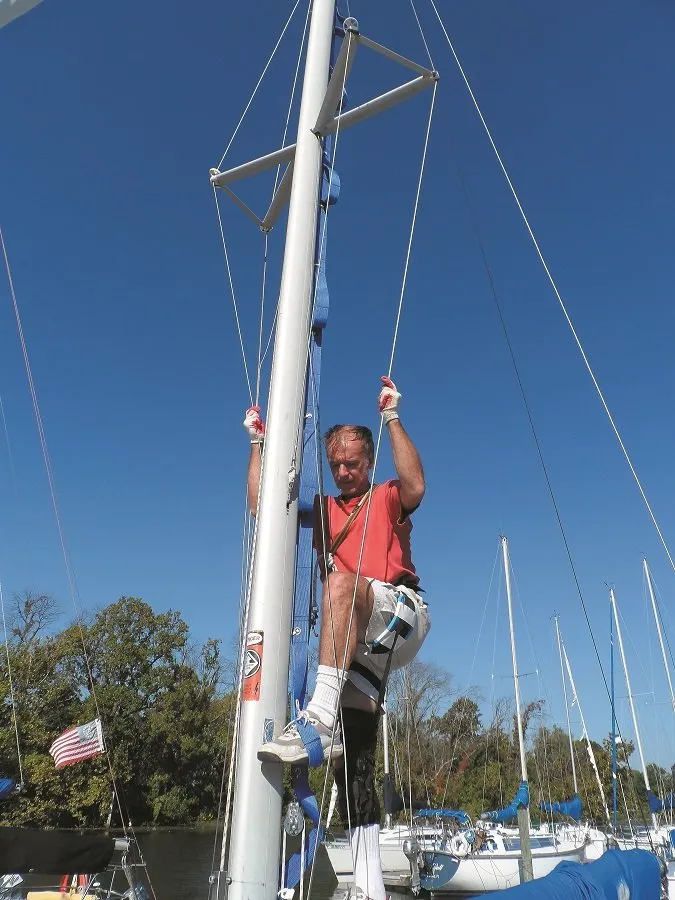Mast steps are a great help when going aloft, but they add weight where it hurts most (aloft), and halyards love to get stuck behind them. One alternative is the Mast Mate webbing ladder, which hoists on your mainsail track.
Ive been using the Mast Mate, webbing ladder for every year for 25 years. It makes climbing faster than going aloft with a bosuns chair alone, and gives you a place to stand at the top. Over the years, Ive learned a few tricks to make the system safer and easier to use.
- The instructions tell you to store the ladder in a flat roll, from top to bottom, with the foot loops pressed flat in the down position. This is critical. Rolled this way, the foot loops all spring open correctly, ready to insert your toe.
- You can hoist the Mast Mate outside the mainsail track (for example, if the sail is up) by tensioning hard, but it will wobble. Inserting your feet into the loops may be more difficult, since they are free to rotate.
- The Mast Mate has a pair of foot loops about three feet below the masthead. Locked into the sail track with slugs, these provide considerable stability and support, like a pair of steps that you can’t fall out of. They also take weight off your backside, making climbing in a lighter harness practical, avoiding the need for bulky bosuns chair.
- Durability is substantial. We’ve used it up the mast dozens of times and up trees a few more. Without a spot of wear, it will outlive me.
Crew Training
Mast climbing accidents happen because the crew member either misunderstood or did not perform their duties attentively and properly. Belaying should be considered a precision job with zero tolerance for error.
- Actively tail the winch; the tail can jump out of a self-tailing winch. Same with electric winches.
- Hoist through a locked jammer. In this way, if the helper botches the belay, the jammer will still grab. Some jammers have a specific position for this function.
- Allow no slack as the climber ascends. If there is slack, there can be harmful shock loading and turns can jump off the winch. The no-slack rule also applies to when belaying a climber using a mast ladder or ascenders.
- Use a secure means of locking off the belay. Use a line jammer, a large cleat, or tie-off the tail to something strong. This is in addition to the main climbing support. Finally, the climber should be secured by a separate means (a pair of 5,000-pound slings secured to a separate strong fitting, or looped around the mast with a no-slip knot. This is particularly important should the belay be untended while you are working aloft.
- Belay to one side. It is best if the belayer is not directly below the climber, particularly once he begins working. Although most tools will be secured to the climber with lanyards, mistakes happen and a wrench becomes a missile after it has fallen 50 feet.

































